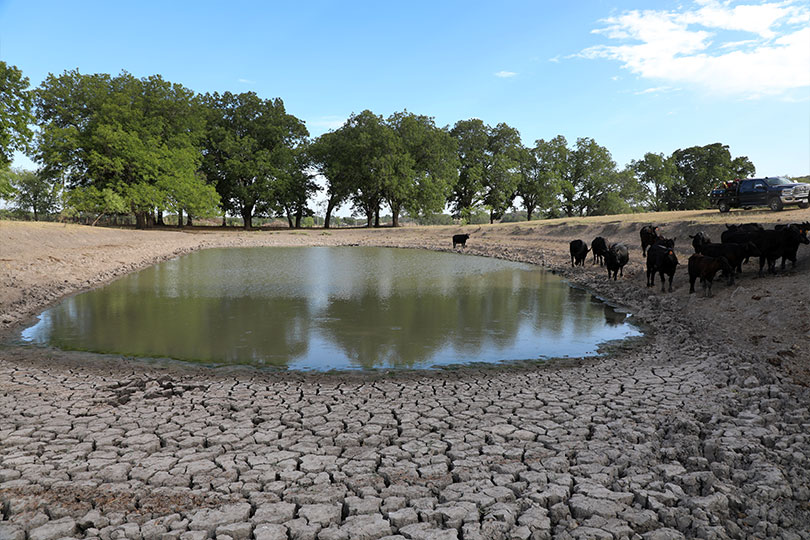By Emmy Powell
Communications Specialist
During drought and high temperatures, water quantity and quality are essential to keeping cattle hydrated and healthy.
The Texas A&M Veterinary Medical Diagnostic Laboratory provided suggestions for ranchers to help keep cattle healthy and productive.
Stock tanks and ponds that have kept cattle watered are likely drying up as the severe drought conditions continue. Access to clean water sources help mitigate cattle losses due to water deprivation. In drought, forage growth may lessen, and this could lead cattle water requirements to increase.
Check pumps, troughs and tanks frequently, and avoid working cattle in the heat of the day.
Cattle are creatures of habit, so they may ignore other distant watering points in the pasture if their preferred water source dries up. If moving cattle to new pastures, drive them to the troughs and tanks to ensure they know where to find water.
If cattle become dehydrated, they may drink too much water too quickly. Severe hydration can lead to cattle having increased sodium levels in all tissues. If too much water is consumed too quickly, water will rush to their brain causing pressure to build, leading to water/salt intoxication. That can lead to death, or other effects from pressure in their brain may cause instability or seizures.
Salt intoxication means the sodium concentration increases in the body because of dehydration. When cattle are dehydrated, they need to drink small amounts of water to avoid this.
Ways to manage salt intoxication include filling the tank up with small amounts of water at a time or letting all cattle drink at once and repeating the cycle several times with breaks between watering until their thirst is satisfied.
It is important to test the water to ensure fresh water is provided to cattle. Measure the level of sodium, calcium, nitrates, magnesium salts and sulfates. Be aware of blue-green algae growth in tanks and troughs. Blue-green algae can be toxic. If it is found, provide a new source of water.
Toxic weeds may thrive along the edges of a water source in drought. Monitor shorelines of tanks and ponds for toxic weeds, such as small-headed sneezeweed or knotweed, and control grazing to avoid toxic weeds.
To learn more, visit agrilifetoday.tamu.edu.

